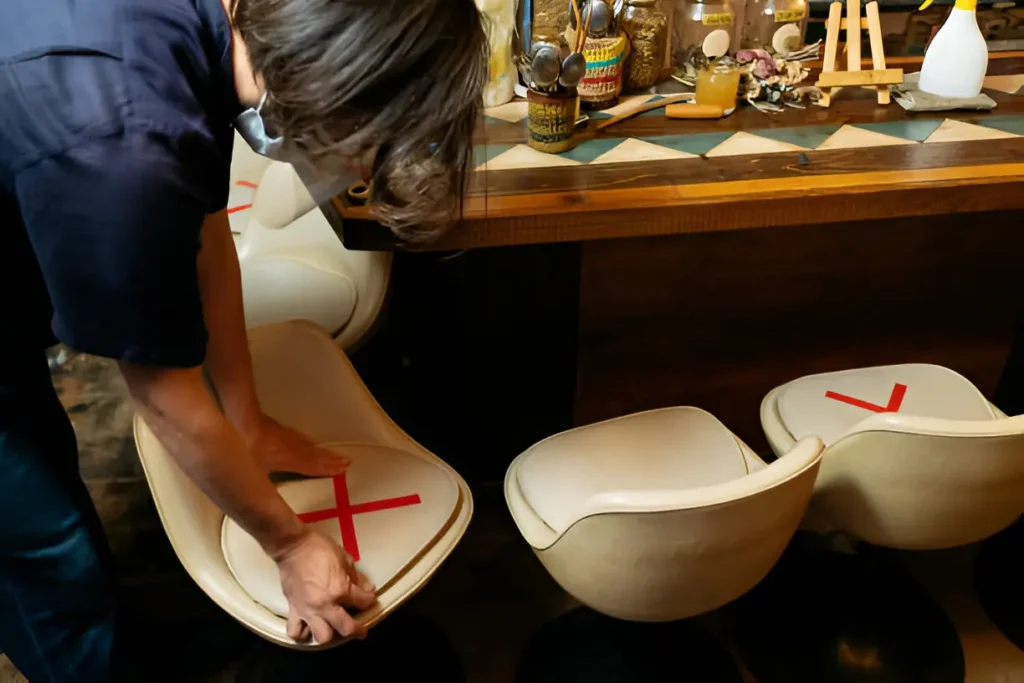“The details are not the details. They make the design.” Those words from Charles Eames hold particular significance in the restaurant industry. A broken chair might seem inconsequential, but the customer notices—and it affects his experience within your space. Guests notice even more than we think, especially when they are dining.
If your vinyl seating looks cracked and faded, it’s time to seek out a repair; that’s where restaurant leather & vinyl repair comes in. It’s not merely a means to save money but also to keep your place clean, trendy, enjoyable, and inviting. A torn booth or worn-out seat can subconsciously convey the opposite of your intended message. This guide will advocate for spotting issues early and repairing them before potentially losing business.
Look for the First Signs of Damage
Vinyl damage does not always start big. You may initially notice small cracks or discolouration. However, eventually, those minor issues escalate into rips, peeling, or stretched-out seats.
It is easier to monitor your seats. If you notice that the vinyl is starting to show significant wear, there is often a quick fix that will keep your seats functional for longer. If you wait too long, however, it may mean replacing the whole seat.
Know What Causes Irritation
By understanding what causes wear in the first place, you can minimise your potential for future damage. Most of the time, wear occurs due to excessive use, exposure to cleaning chemicals, heat, or sun. Outdoor seating or seating in direct sunlight will take damage faster.
Moisture and sweat will also wear down the surface over time. Some of the cleaning products that you use, especially alcohol-based cleaning chemicals, will dry out your vinyl material. Consider using cleaning products that are safe for leather and vinyl to help your seats last a little longer.
DIY Repair Kits Can Handle Minor Issues
Small cracks and holes don’t always need a pro. There are vinyl and leather repair kits available for purchase online or in stores. These kits usually include patches, adhesives, fillers, and color-matching dye.
Here’s how a basic repair works:
- Clean the area thoroughly
- Use filler for any deep cracks or holes.
- Color-match and apply dye to blend with the original finish
This process works best when the damage is smaller than a quarter. It won’t make your chairs brand new, but it will make them look better.
Know When It’s Time to Call a Pro
Some repairs are simply not worth taking on the DIY route. If the damage is deep, covers large areas, or includes foam padding beneath, a professional is your best bet. They can also reupholster chairs if needed, which is often more cost-effective than purchasing new ones.
Professionals often use heat-based tools to blend vinyl surfaces. Their repairs are more seamless and last longer. It’s a smart option for high-end furniture or dining areas that are visible.
Protect the Seating After Repair
Once your chairs are fixed, keep them in good shape. That means adjusting cleaning routines and protecting from future wear. Simple steps can add years to your furniture.
Try these tips:
- Keep chairs out of direct sunlight when possible
- Use protective sprays made for vinyl and leather.
- Wipe down chairs gently after each shift with mild soap and water.
Routine care saves you the headache of frequent repairs. Staff should know how to clean chairs properly without causing damage.
Create a Maintenance Schedule
Just like kitchen checks, chair maintenance should be part of your routine. Inspect your seating once a month or weekly if your restaurant gets a lot of traffic. Write down what needs repair and keep a log for future issues.
Here’s what to check regularly:
- Surface cracks or fading
- Loose seams or wobbly legs
- Spongy or misshapen seat padding
With a set schedule, you’ll catch issues before customers do. That helps protect your reputation and your furniture investment.
Why It’s Worth the Effort
It might be tempting to ignore a torn seat or discolored booth. However, customers notice, and it affects how they feel about your space. A well-maintained restaurant feels cleaner, more professional, and more welcoming.
One restaurant owner in Chicago shared that after reupholstering 15 vinyl chairs, regulars commented on the “new energy” in the space. And in an industry where word of mouth matters, small fixes can go a long way. A little time and attention can make a huge difference.
Repairing your vinyl chairs is easier than most people think—and it keeps your space looking polished. Whether you’re fixing small tears yourself or hiring a pro, staying on top of restaurant leather & vinyl repair protects your investment and your customer experience. Don’t wait for a bad Yelp photo to push you into action. Keep your chairs in shape, and your guests will keep coming back.
Also Read- Smart Group Travel: Tips for Seamless Bus Trips and Memorable Journeys


